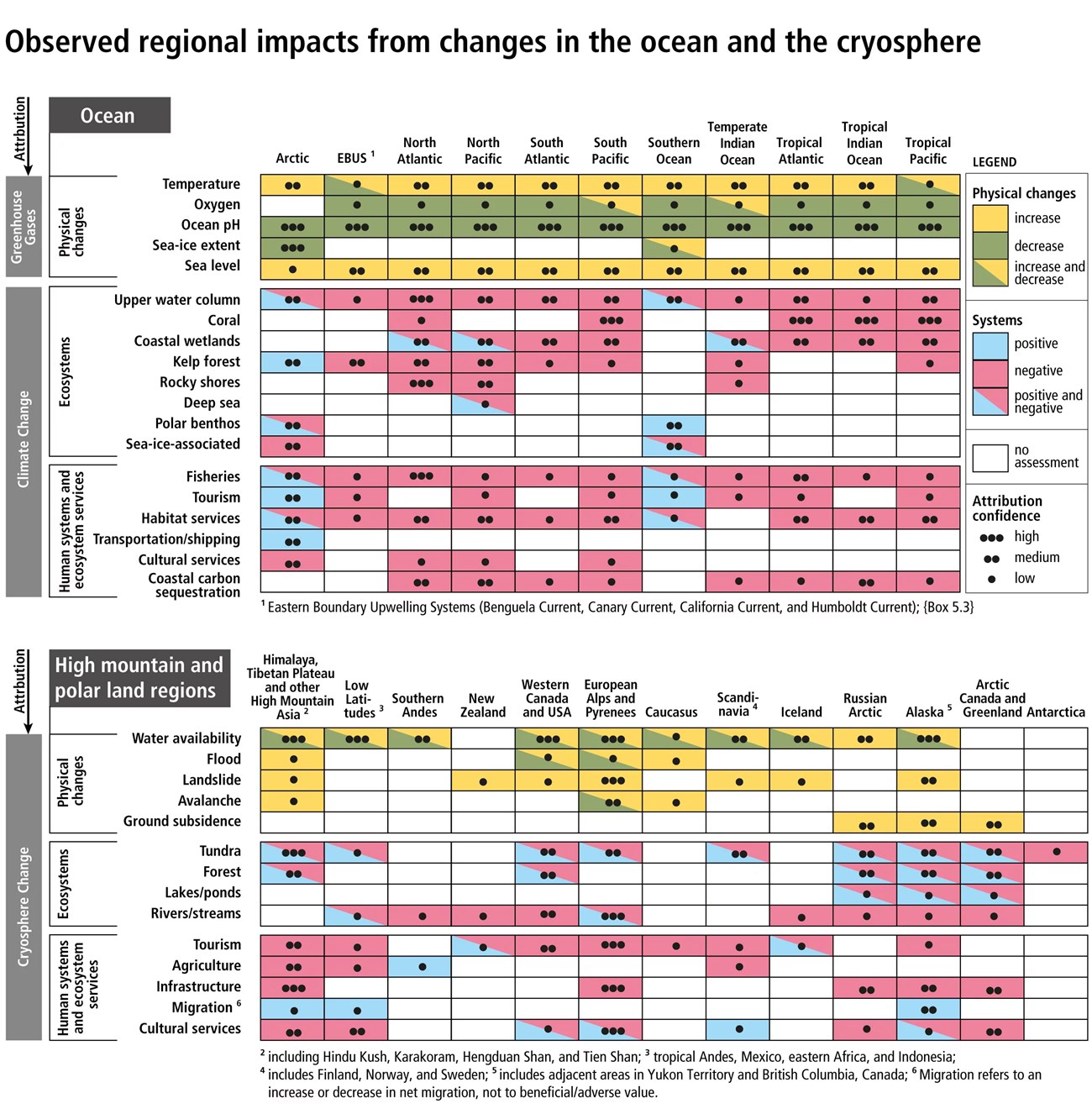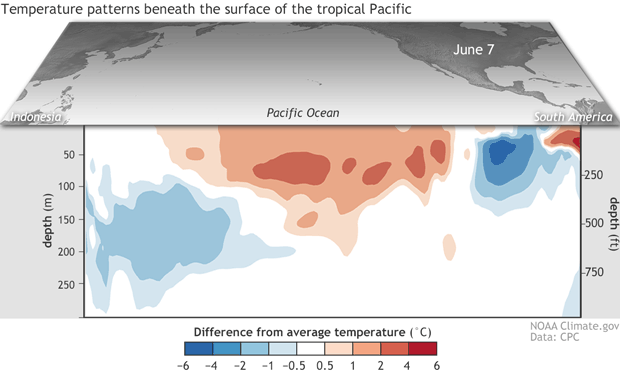Last updated: October 31, 2019
Article
Climate Corner, October 2019
IPCC Oceans and Cryosphere Report Released
In late September, the Intergovernmental Panel on Climate Change (IPCC) published a new special report. This one is focused on changes to our oceans and cryosphere (the ice-covered polar and high-mountain regions of our planet), which are thoroughly interconnected with the rest of Earth’s climate system. It is a huge report summarizing the findings of nearly 7,000 studies. It covers already-observable impacts of climate change on oceans and ice, the risks of varying degrees of continued warming, and the significant benefits of taking ambitious action to counter those risks.

IPCC.
For example, the ocean has been warming pretty much non-stop for the last half-century, and the rate of warming has more than doubled since 1993. Marine heatwaves are increasing in frequency and intensity, and marine species are starting to shift away from the equator. Meeting the goals of the Paris agreement would mean 20 times more marine heatwaves by the end of this century compared to the end of the 20th century. But a higher emissions scenario could mean 50 times more marine heatwaves. Responses such as protecting and restoring marine ecosystems can help counter the impacts of things like ocean warming under lower emissions scenarios.
Other issues covered in the report include melting ice sheets, sea ice, and snow packs, thawing permafrost, ocean acidification, declining ocean oxygen concentrations, rising sea levels, increasing frequency and intensity of storms, and more. Check out the IPCC’s Summary for Policy Makers or the full Special Report on the Ocean and Cryosphere in a Changing Climate, for more key findings and conclusions. A Yale Climate Connections article also provides a nice summary.
Characteristics of Past El Niño Events May Hold Clues to How El Niños Will Change Over Time

Climate.gov figure from CPC data.
El Niño events, the periodic oceanic and atmospheric phenomena characterized by unusually warm sea surface temperatures in the Pacific Ocean, are highly complex. As a result, it has been notoriously hard to predict how they will change in the face of climate change. Model projections remain highly uncertain. Thus, a new study published in Proceedings of the National Academy of Sciences endeavors to classify past El Niño events using a cluster analysis based on how they began and grew to uncover new patterns that could provide useful insights. The analysis yielded four categories of El Niños, including three categories with distinct onset characteristics. In particular, since the 1970s, El Niños have become more frequent, and their onset has shifted from the eastern to the western Pacific. The authors hypothesize that this change is related to background warming in the western Pacific Ocean due to climate change. If they are correct, that would mean that further warming would be expected to further increase the frequency and intensity of El Niños in the future. Check out the full article, Historical change of El Niño properties sheds light on future changes of extreme El Niño, to learn more.
